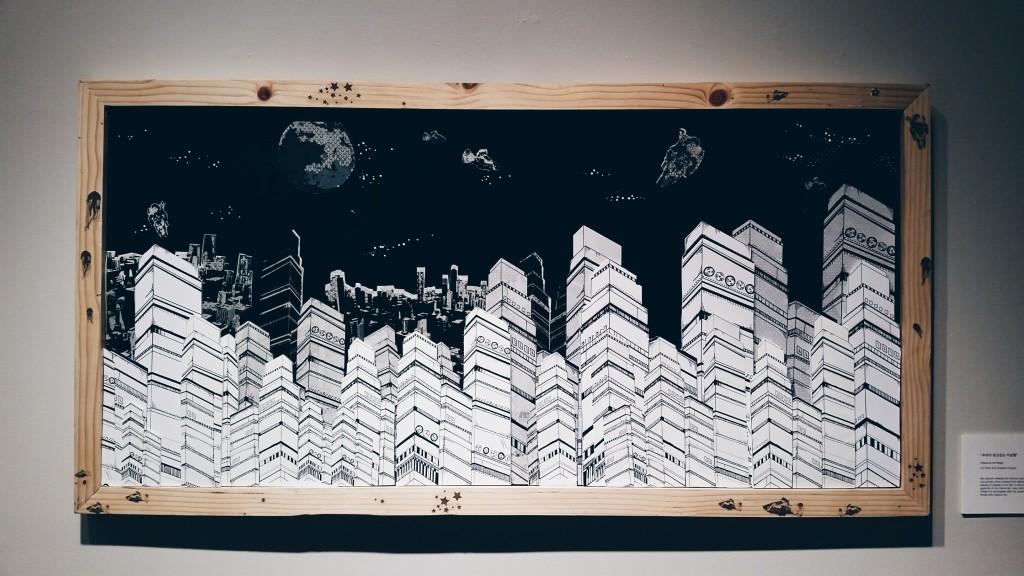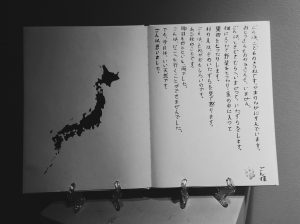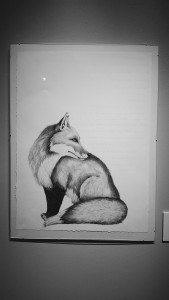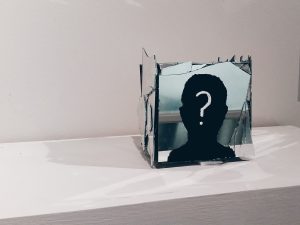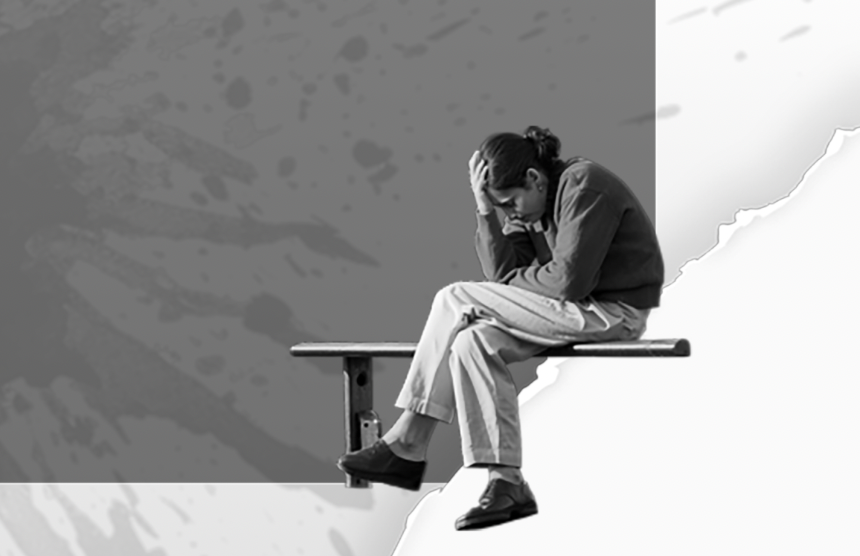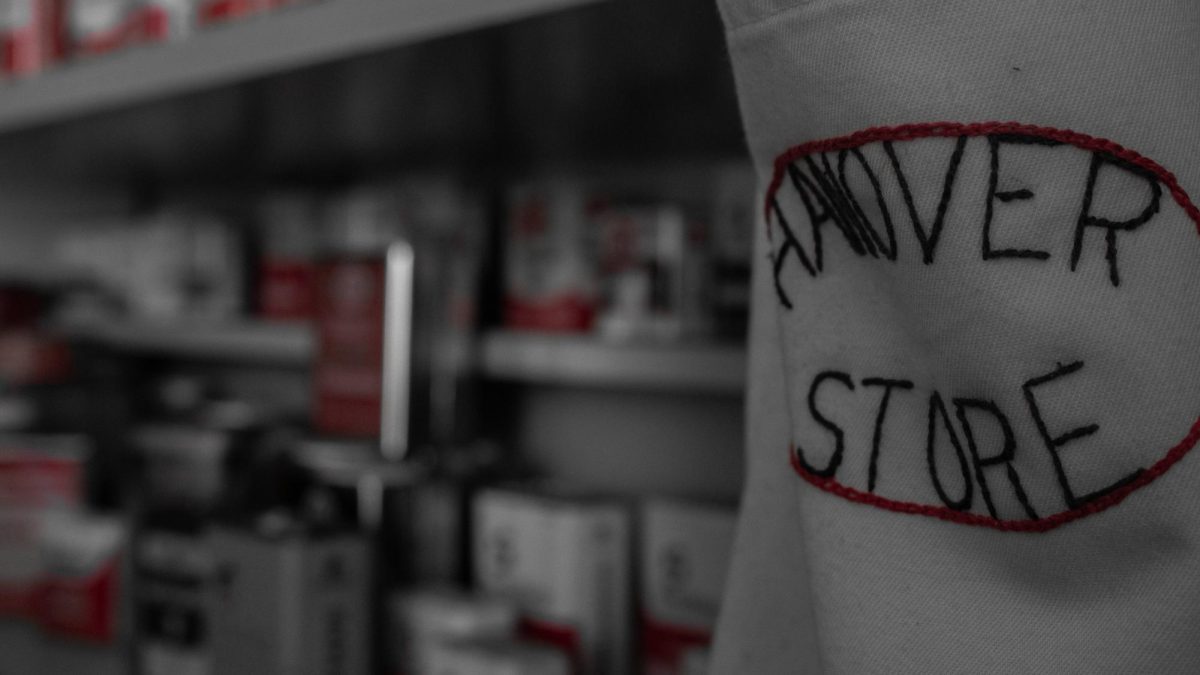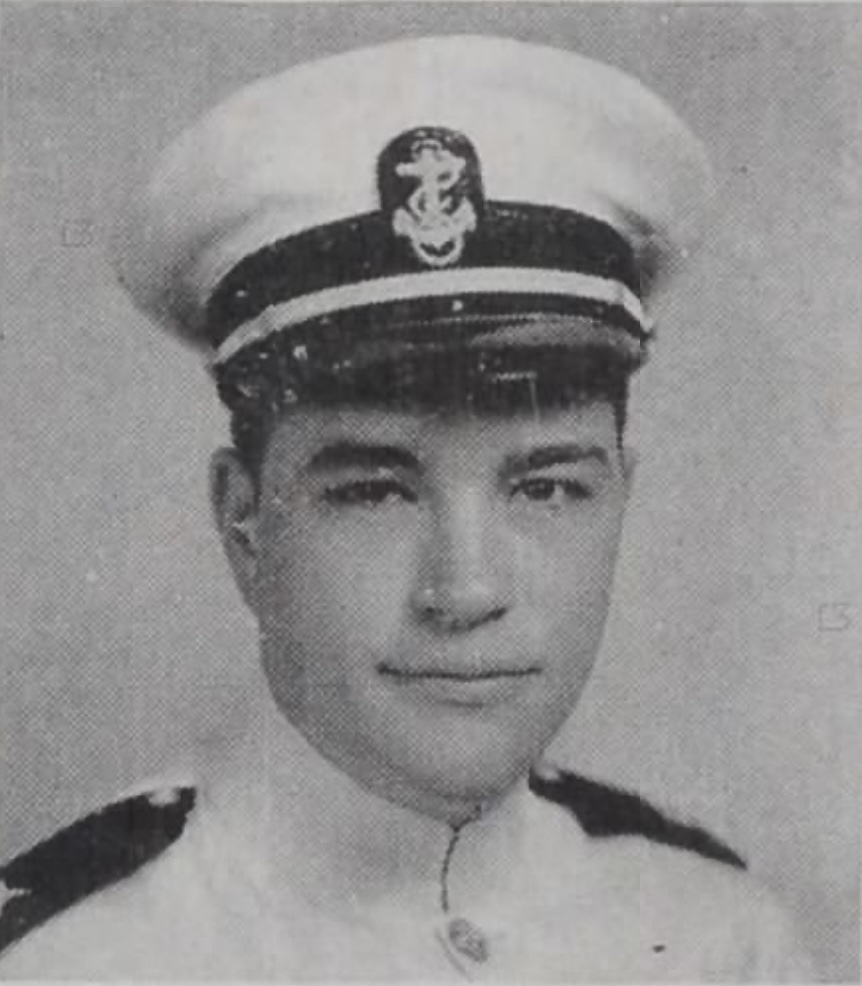Dee Friesen | Arts + Life Editor
There are multiple reasons to create a work of art. Whether your goal is to evoke emotion, tell a story, or challenge controversy, art is a creative way to express yourself. If you haven’t already, you should take some time to enjoy the amazing works displayed in SSA this week. Here’s a glance at just a few of the many pieces as well as a quick behind the scenes Q+A with the artists.
The Beauty of Ignorance
Kayla Wilson is a sophomore Graphic Design major. This project was for her Typography mid-term. 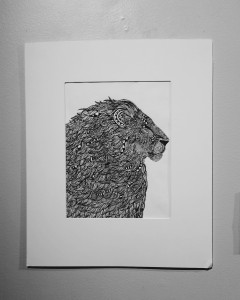
How long did this project take? This drawing took 11 and a half hours to do.
What inspired you? I was inspired by the controversy behind the Cecil the Lion story that happened this summer. After hearing all the different sides to the arguments about what happened I broke it down into two very basic sides, those who see the lion as beauty and ignore all the danger and those who see the lion as danger and ignore the beauty. This is the first of two pieces that illustrate these two different sides, this piece illustrating the beauty and ignoring the danger.
What is the message behind your work of art? The purpose of this piece is to show beauty in something that is very dangerous, making the viewer ignore the danger altogether. The next piece that will go with this one will show the danger and ignore the beauty.
What was the most frustrating part of your process? The most frustrating part of the process was finding the right way to display it when it was finished (i.e. frame or mat)
What was the most fun or exciting moment during your project? The most exciting part of my project was finishing it and seeing how it all came together in the end.
Scatterbrained Intent
Christabel Bozonie is a senior Liberal Arts major. This piece is a part of a personal project that may be featured later in her senior show. 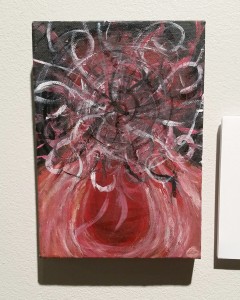
How long did this project take? I started off by painting a basic background and letting it dry overnight before continuing. So, overall, it took me about 12 hours. Not including drying time or my thought processes, perhaps an hour or two.
What inspired you? I am inspired by the general feelings of something or someone. Color has a lot of meaning for me, and I use them to display what I want appropriately. My particular inspiration with this piece was the feeling one gets when thoughts or life get in the way of intentions. I am also loosely inspired by Freud’s idea of the Id, Ego, and Superego. Though some of my work has to do with the basic, most inner self (best described by the Id), it also has to do with the conflict between it and the other elements of the psyche.
What is the message behind your work of art? That though you may want to do something in your deepest, most inner being, that other elements can get in the way and cloud that desire. You could have the intentions or power to do something great, but your thoughts or the input from the world around you can get in the way.
What was the most frustrating part of your process? Usually, I try to feel what I am attempting to display while I am painting it. If this is a negative feeling, sometimes the residual effect can be frustrating. Otherwise, frustration might come from the inability to portray the elements I wish to.
What was the most fun or exciting moment during your project? This one came together fairly easily and turned out pretty much how I saw it mentally. I have to say it is always fun or exciting when that happens!
우리가 잊고있는 이상향
Rebecca Armitage is a junior Arts Management major/Graphic Design minor. This piece is her mid-term for a couple of classes: The Human Figure and Typography.
How long did this project take? About 5 days; approximately 25 hours.
What inspired you? My artwork reflects the various inspiration drawn from each new experience. Recently, my primary drive comes from attempting to capture the beauty of some of the important places or people in my life.
What is the message behind your work of art? In this particular series, my motivation is to capture the splendor of my home as I use unorthodox artistic materials to create a portrait of the city. While it is contrasted with my usual repertoire, this series serves to be a homage to those who inspire me. While the message of the work is rather simple, this particular piece focuses more on technique as I attempted to use a variety of different media.
What was the most frustrating part of your process? For me the hardest/ most frustrating part of the process, was trying to come up with the right concept; it can be easy to have just any concept but due to time limitations, it is not always easy to make it new or different. So without a solid concept starting is the most frustrating part. A close second would be trying to work with new material that does not always like to cooperate and behave in the manner to which one would hope.
What was the most fun or exciting moment during your project? Personally, the best moment of the process comes after the piece is up and well lit, before most people know it’s mine. I like to see the reactions of my audience (its better when they don’t know I am the artist) as they try to figure out how I created a work or when they get really close to look at all the little details I have tried to include. There is something about the moment that they take to look at one of my pieces that makes all the time and work that went into it, truly worth it.
Gon the Little Fox
Emily Bunch is a junior Graphic Design major/Art minor. This project was her mid-term for a couple of art studio classes: The Human Figure and Typography.
How long did this project take? Roughly, the drawing took about 15-20 hours while the image and writing in the book took about 1 hour. Overall, I probably spent around 20-25 hours on the entire process.
What inspired you? This piece is intended to be one part of a series of 3-4 drawings that will be part of a gallery show in Spencer in early November. The inspiration for the series stems from my love of reading and literature as well as my interest in other cultures. I have chosen four stories (each one from a different country) that have a main animal character as well as a strong emotional connection between characters and the reader. Most of the stories are well-known, but a couple of them come from folk lore. I traveled to Japan this past J-term and absolutely fell in love with the culture, so I also wanted to pay homage to the country. For this piece, I chose a common story from Japanese folk lore that I believe has a moral that can relate to anyone of any culture.
What is the message behind your work of art? Storytelling is the predominant focus of my work: through the use of line, precision, and subtleness, I attempt to establish a connection with the viewer. I want the audience to feel a connection with the piece and not by simply reading the chosen story. The purpose of the book is to let the audience know where the story comes from while also allowing a bit of that country’s culture show through in the written language.
What was the most frustrating part of your process? The most frustrating part of my process was coming up with a concept, sticking to it once it was formed, and deciding how exactly I wanted to portray the text without allowing the viewer to focus on it. I didn’t want the audience to necessarily read the story, but I did want them to understand that the drawing and the text relate. So, there was a lot of trial-and-error with this piece. Also, my style is very detail-oriented and precise which doesn’t allow me to draw things quickly, so the process of actually drawing the fox and writing the Japanese characters went slowly—agonizingly sometimes.
What was the most fun or exciting moment during your project? Though the drawing and writing took up a lot of time, in hindsight it was also very enjoyable. Drawing tends to relax me as I focus on each line, and time ceases to matter. My peers often voice their opinions and offer constructive feedback during the process, so I get to know what my fellow artists think of my work. I also really enjoy watching people react to the work, whether it’s by getting up close to the drawing to see all of the minute details or by taking a step back to see how the lines blend at a distance. Seeing their reactions and (when they know me) hearing their thoughts makes my time-consuming process well worth it.
Who am I?
Keely Bycroft is a sophomore Business major with a Marketing concentration and a Graphic Design minor. This project was her mid-term for Typography.
How long did this project take? The thought process took all semester, but the production took about 5 hours over the course of a few days.
What inspired you? I was inspired by my personal reflections on life. I used my emotions in life to help create a piece of art that would deliver a message about how I interpret myself but also hope to send a message to others who may have the same thoughts, that they are not alone and this is not uncommon.
What is the message behind your work of art? This piece brings to mind and image of what uncertainty and imperfection looks like in the midst of uncovering true potential and purpose. Ralf Ellison once said, “When I discover who I am, I’ll be free.” But how do we find out who we are? What is the right answer? These are the questions many people ask themselves every day. Often times, we seek out answers in which we can’t clearly see. When we look at ourselves, we see nothing but darkness and confusion. Our lives look cracked, off centered, and imperfect, and each individual we turn to has a different expectation of us. It is as if we are trapped inside a box of expectations and there is no way out; therefore, we try to shape our lives into what is expected of us and lose ourselves in our imperfections rather than staying true to our own values and beliefs.
What was the most frustrating part of your process? I found that the most frustrating part of this process was figuring out how to convey my message and emotions in a way that others can understand and recognize.
What was the most fun or exciting moment during your project? The most fun part of my project, was watching my ideas develop and grow into, not just a piece of art work, but an interpretation of my emotions. It was a great feeling to finish my piece, take a step back and know that no matter what anyone thinks about my work, I completed one of my first pieces of art in which I expressed my personal feelings and emotions and I am proud of that.



